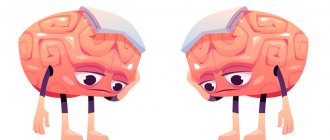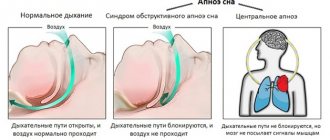Mental disorders (or mental illnesses) are conditions that affect a person's thinking, feelings, mood, and behavior. They can be episodic or long-lasting (chronic). Mental disorders can affect your ability to communicate with others and function every day. If a person begins to develop a mental disorder, his quality of life begins to gradually decline.
Our clinic has been effectively helping people maintain mental health and get rid of mental disorders for more than 30 years.
Mental disorders are not caused by defects of character or upbringing. They have nothing to do with laziness, whims or weakness.
Difference between psychology and psychiatry
The job descriptions of psychologists and psychiatrists are often confused, but the main difference lies in the authority of medical professionals.
Psychiatrists are doctors who use their medical education and clinical experience to treat mental, emotional and behavioral disorders through medication and psychotherapy.
Psychology, a discipline rooted in philosophy, concerns the educational process and the associated philosophical approach to human life and behavior. Psychologists do not have the right to diagnose and treat mental disorders independently, without orders from a psychiatrist. They can carry out correction of upbringing in childhood and adulthood. In fact, they must work under the guidance of a psychiatrist. Prescribing treatment for them is prohibited.
Clinical training and education also differ between psychologists and psychiatrists. Psychology students study cognition and human behavior, while psychiatry students study biology and medicine.
What are the types of mental disorders? There are many different types of mental disorders. They are listed in ICD-10
F00-F99 Mental and behavioral disorders
- F00-F09 Organic mental disorders
- F10-F19 Substance use disorders
- F20-F29 Schizophrenia, schizotypal and delusional disorders
- F30-F39 Mood disorders (affective)
- F40-F48 Neurotic, stress-related and somatoform
- F50-F59 Behavioral disorders
- F60-F69 Personality disorders
- F70-F79 Mental retardation
- F80-F89 Disorders of psychological development
- F90-F98 Emotional disorders
- F99 Unspecified mental disorders
These sections include all pathological conditions of higher nervous activity. Such as:
- Anxiety disorders including panic disorder, obsessive-compulsive disorder and phobias.
- Depression, bipolar disorder and other mood disorders.
- Eating disorders.
- Post-traumatic stress disorder.
- Psychotic disorders.
- Other painful conditions.
What causes mental disorders?
There is no single cause of mental illness. A number of factors may contribute to the risk of mental illness, such as:
- Heredity.
- Stress.
- External and internal biological factors associated with disruption of the body's metabolic processes.
- Traumatic brain injury.
- Exposure to viruses or toxic chemicals.
- Use of alcohol or drugs.
- Severe physical illnesses, such as cancer.
Who can get mental illness?
Every person in the modern world is at risk of developing the disease. This is due not only to genetic predisposition, but also to high psycho-physical stress and nutrition.
In all countries of the modern world, the problem of human mental health is important and relevant. Mental disorders have a large “specific weight”: More than 60% of people need the help of a psychiatrist at least once in their lives. In addition, the population, unfortunately, is poorly informed about where and what kind of help they can get. People underestimate the importance of mental illnesses and do not know that today certain successes have been achieved in recognizing them, establishing the causes and mechanisms of development of mental disorders, and in providing assistance to people with such diseases. It should also be noted that for many years psychiatry was a closed topic. And the fact that today we can discuss it is a great achievement.
Diagnosis of mental disorder
A physical examination and possibly laboratory tests if your doctor thinks that a medical condition may be causing your symptoms. Pathopsychological diagnostics will give an answer to your type of thinking and will be able to help the doctor in a more nuanced assessment of your psychological state, and will tell you about the individual characteristics of the formation and functioning of higher nervous activity.
There are many components to a person’s mental health. The doctor, through a specially structured conversation and survey, reveals the characteristics of yours. This is necessary in order to take into account all the nuances when prescribing therapy. The clinic’s specialists identify and take into account every detail and select the necessary treatment so that it becomes as effective for you as possible and brings a minimum of inconvenience.
To diagnose a mental disorder, the doctor evaluates the quality of thought processes, the correctness of assessment and display of the surrounding world, the adequacy of neuropsychic reactions, the quality of assessment and display of one’s self. In addition, to fully assess the work of higher nervous activity, the doctor assesses intelligence, memory ability, amount of knowledge, the quality of social contacts, adaptive abilities, reaction to external stimuli and much more.
When one of the abilities of higher nervous activity decreases and, as a result, the quality of life of the person himself begins to suffer or the people around him suffer, we can talk about the presence of a mental disorder.
How to treat a mental disorder?
It is easier to maintain mental health and prevent possible mental disorders by maintaining it and avoiding damaging factors. However, this is not always possible and problems may arise that it is advisable to solve as quickly as possible. To do this, if any problems arise, you should immediately contact a good psychiatrist. The sooner you begin to restore your mental health, the faster and more effective the therapy will be.
Treatment of a mental disorder depends on the true cause of its formation and the area of the brain that has undergone undesirable changes. You and your doctor will create a personalized treatment plan. The specialist will select methods and forms of therapy to obtain maximum effect.
In some cases, more intensive therapy may be required in the form of intravenous infusions in a day or 24-hour hospital. You may need to be hospitalized. This may be due to the need to quickly localize and stabilize your mental state. In our clinic you will receive qualified consultation, intensive therapy, group and individual psychotherapeutic sessions.
People who can adapt to living conditions and solve life problems are usually assessed as mentally healthy. If these abilities are limited and a person cannot cope with everyday tasks in personal, family life or at work, when he is unable to achieve personal goals, then we may be talking about one or another degree of mental disorder. Today, such pathologies are much more common than is commonly believed. According to WHO, every fourth to fifth person in the world has a mental or behavioral disorder. Symptoms of mental illness are always very variable and varied, but they are all associated with a disorder of higher nervous activity. Mental disorders affect a person’s behavior and thinking, his perception of the surrounding reality, memory and other important mental functions. Clinical manifestations of mental diseases in most cases form entire symptom complexes and syndromes. Thus, a sick person may experience very complex combinations of disorders, which only an experienced psychiatrist can evaluate to make an accurate diagnosis. Let's consider the main symptoms and syndromes of mental disorders in order of their severity - from mild to more profound, when they appear, experts recommend seeking professional help
Asthenic syndrome.
Asthenic syndrome (asthenia) is a widespread condition that is manifested by increased fatigue, exhaustion, and decreased performance. People with asthenic disorders experience weakness, instability of mood, they are characterized by impressionability, sentimentality, and tearfulness; They are easily moved, they are easily irritated, they lose their composure over any little thing. Asthenic conditions are also characterized by frequent headaches and sleep disturbances (it becomes superficial, does not bring rest, and increased sleepiness is noted during the day). Asthenia is a nonspecific disorder, i.e. can be observed in almost any mental illness, as well as in somatic diseases, in particular after operations, severe infectious diseases, or overwork.
Obsessiveness.
Obsessions are experiences in which a person, against his will, has any special thoughts, fears, doubts. At the same time, a person recognizes them as his own, they visit him again and again, it is impossible to get rid of them, despite a critical attitude towards them. Obsessive disorders can manifest themselves in the emergence of painful doubts, completely unjustified, and sometimes simply ridiculous thoughts, in an irresistible desire to count everything. A person with such disorders may check several times whether he has turned off the light in the apartment, whether he has closed the front door, and as soon as he moves away from the house, doubts take possession of him again.
This same group of disorders includes obsessive fears - fear of heights, enclosed spaces, open spaces, traveling in public transport and many others. Sometimes, in order to relieve anxiety, internal tension, and calm down a little, people experiencing obsessive fears and doubts perform certain obsessive actions or movements (rituals). For example, a person with an obsessive fear of pollution may spend hours in the bathroom, repeatedly wash his hands with soap, and if he is distracted by something, start the whole procedure again and again.
Affective syndromes.
These mental disorders are the most common. Affective syndromes are manifested by persistent changes in mood, most often a decrease in mood—depression, or an increase in mood—mania. Affective syndromes often occur at the very beginning of mental illness. They may remain predominant throughout, but may become more complex and coexist for a long time with other, more severe mental disorders. As the disease progresses, depression and mania are often the last to disappear.
When we talk about depression, we primarily mean its following manifestations.
- Decreased mood, feeling of depression, depression, melancholy, in severe cases physically felt as heaviness or chest pain. This is an extremely painful condition for a person.
- Decreased mental activity (thoughts become poorer, shorter, more vague). A person in this state does not answer questions immediately - after a pause, gives short, monosyllabic answers, speaks slowly, in a quiet voice. Quite often, patients with depression note that they find it difficult to understand the meaning of the question asked of them, the essence of what they read, and complain of memory loss. Such patients have difficulty making decisions and cannot switch to new activities.
- Motor inhibition - patients experience weakness, lethargy, muscle relaxation, talk about fatigue, their movements are slow and constrained.
In addition to the above, characteristic manifestations of depression are:
- feelings of guilt, ideas of self-blame, sinfulness;
- a feeling of despair, hopelessness, impasse, which is very often accompanied by thoughts of death and suicide attempts;
- daily fluctuations in condition, often with some relief of well-being in the evening;
- sleep disorders; shallow, intermittent night sleep, with early awakenings, disturbing dreams, sleep does not bring rest).
Depression may also be accompanied by sweating, tachycardia, fluctuations in blood pressure, feelings of heat, cold, chilliness, loss of appetite, weight loss, constipation (sometimes symptoms such as heartburn, nausea, and belching occur in the digestive system). Depression is characterized by a high risk of suicide! Read the text below carefully - this will help you to notice in time the appearance of suicidal thoughts and intentions in a person with depression
If you have depression, the possibility of a suicide attempt is indicated by:
- statements of a sick person about his uselessness, guilt, sin;
- a feeling of hopelessness, meaninglessness of life, reluctance to make plans for the future;
- sudden calm after a long period of anxiety and melancholy;
- accumulation of medications;
- a sudden desire to meet old friends, ask forgiveness from loved ones, put your affairs in order, make a will.
The appearance of suicidal thoughts and intentions is an indication to immediately consult a doctor and decide on hospitalization in a psychiatric hospital!
Manias (manic states) are characterized by the following symptoms.
- Increased mood (fun, carefree, rosy, unshakable optimism).
- Acceleration of the pace of mental activity (the appearance of many thoughts, various plans and desires, ideas of overestimation of one’s own personality).
- Motor excitement (excessive liveliness, mobility, talkativeness, feeling of excess energy, desire for activity).
Manic states, like depression, are characterized by sleep disturbances: usually people with these disorders sleep little, but a short sleep is enough for them to feel alert and rested. With a mild version of the manic state (so-called hypomania), a person experiences an increase in creative powers, an increase in intellectual productivity, vitality, and performance. He can work a lot and sleep little. He perceives all events with optimism. If hypomia turns into mania, that is, the condition becomes more severe, the listed manifestations are accompanied by increased distractibility, extreme instability of attention and, as a result, loss of productivity. Often people in a state of mania look lightweight, braggarts, their speech is replete with jokes, witticisms, quotes, their facial expressions are animated, their faces are flushed. When talking, they often change their position, cannot sit still, and actively gesticulate. Characteristic symptoms of mania are increased appetite and increased sexuality. The behavior of patients can be unrestrained, they can establish multiple sexual relationships, and commit thoughtless and sometimes ridiculous actions. A cheerful and joyful mood can be replaced by irritability and anger. As a rule, with mania, the understanding of the painfulness of one’s condition is lost.
Senestopathies.
Senestopathies (Latin sensus - feeling, sensation, pathos - illness, suffering) are symptoms of mental disorders, manifested by extremely diverse unusual sensations in the body in the form of tingling, burning, twisting, tightening, transfusion, etc., not associated with any disease internal organ. Senestopathies are always unique, unlike anything else. The vague nature of these disorders causes serious difficulties when trying to characterize them. To describe such sensations, patients sometimes use their own definitions (“rustling under the ribs,” “squelching in the spleen,” “it seems like the head is coming off”). Senestopathy is often accompanied by thoughts about the presence of some kind of somatic disease, and then we are talking about hypochondriacal syndrome.
Hypochondriacal syndrome.
This syndrome is characterized by persistent preoccupation with one's own health, constant thoughts about the presence of a serious, progressive and possibly incurable somatic disease. People with this disorder present persistent physical complaints, often interpreting normal or routine sensations as manifestations of illness. Despite the negative results of the examinations and the dissuading specialists, they regularly visit different doctors, insisting on additional serious examinations and repeated consultations. Hypochondriacal disorders often develop against the background of depression.
Illusions.
When illusions arise, real-life objects are perceived by a person in a changed—erroneous—form. Illusory perception can also occur against the background of complete mental health, when it is a manifestation of one of the laws of physics: if, for example, you look at an object under water, it will seem much larger than in reality. Illusions can also appear under the influence of a strong feeling - anxiety, fear. So, at night in the forest, trees can be perceived as some kind of monster. In pathological conditions, real images and objects can be perceived in a bizarre and fantastic form: a wallpaper pattern as a “tangle of worms,” a shadow from a floor lamp as a “head of a scary lizard,” a pattern on a carpet as a “beautiful unprecedented landscape.”
Hallucinations.
This is the name for disorders in which a person with a disturbed psyche sees, hears, feels something that does not exist in reality.
Hallucinations are divided into auditory, visual, olfactory, gustatory, tactile, and general sense hallucinations (visceral, muscular). However, their combination is also possible (for example, a sick person can see a group of strangers in his room and hear them talking).
Auditory hallucinations manifest themselves in the patient’s pathological perception of certain words, speeches, conversations (verbal hallucinations), as well as individual sounds or noises. Verbal hallucinations can be very different in content - from so-called calls, when a sick person hears a voice calling him by name or surname, to entire phrases and conversations involving one or more voices. Patients call verbal hallucinations “voices.”
Sometimes the “voices” are of an imperative nature - these are the so-called imperative hallucinations, when a person hears an order to remain silent, to hit, to kill someone, or to harm himself. Such conditions are very dangerous both for the patients themselves and for those around them, and therefore are an indication for serious drug treatment, as well as special monitoring and care.
Visual hallucinations can be elementary (in the form of sparks, smoke) or objective. Sometimes the patient sees entire scenes (battlefield, hell). Olfactory hallucinations most often represent an imaginary sensation of unpleasant odors (rotting, decay, poisons, some kind of food), less often unfamiliar or pleasant ones.
Tactile hallucinations occur mainly in later life, with patients experiencing burning, itching, stinging, pain, other sensations, and touching the body. The text below lists the signs by which one can determine or at least suspect the presence of auditory and visual hallucinatory disorders in a sick person.
Signs of auditory and visual hallucinations.
- conversations with oneself that resemble a conversation (for example, emotional answers to some questions);
- unexpected laughter for no reason;
- anxious and preoccupied look;
- difficulty concentrating on a topic of conversation or a specific task;
- a person listens to something or sees something that you cannot see.
Delusional disorders.
According to experts, such disorders are among the main signs of psychosis. Defining what delirium is is not an easy task. With these disorders, even psychiatrists often disagree in their assessment of the patient’s condition.
The following signs of delirium are distinguished:
- It is based on incorrect conclusions, erroneous judgments, and false beliefs.
- Delirium always arises on a painful basis - it is always a symptom of a disease.
- Delusion cannot be corrected or dissuaded from the outside, despite the obvious contradiction with reality, a person with delusional disorder is completely convinced of the reliability of his erroneous ideas.
- Delusional beliefs are of extreme significance for the patient; one way or another, they determine his actions and behavior.
Delusional ideas are extremely diverse in their content. These ideas could be:
- persecution, poisoning, influence, material damage, witchcraft, damage, accusations, jealousy;
- self-deprecation, self-blame, hypochondriacal, denial;
- invention, high birth, wealth, greatness;
- love, erotic delirium.
Delusional disorders are also ambiguous in their form. There is a so-called interpretive delusion, in which the evidence of the main delusional idea is one-sided interpretation of everyday events and facts. This is a fairly persistent disorder when a sick person is disrupted in reflecting cause-and-effect relationships between phenomena. Such nonsense is always logically justified in its own way. A person suffering from this form of delusion can endlessly prove that he is right, give a lot of arguments, and debate.
Another form of delirium is sensory or figurative delirium, which occurs against a background of anxiety, fear, confusion, severe mood disorders, hallucinations, and disturbances of consciousness. Such delirium is observed in acutely developed painful conditions. In this case, during the formation of delusions, there is no evidence or logical premises, and everything around is perceived in a special “delusional” way. Often the development of acute sensory delirium syndrome is preceded by such phenomena as derealization and depersonalization. Derealization is a feeling of change in the world around us, when everything around is perceived as “unreal”, “rigged”, “artificial”; depersonalization is a feeling of change in one’s own personality. Patients with depersonalization characterize themselves as having “lost their own face,” “becoming stupid,” and “losing the fullness of their feelings.”
Catatonic syndromes.
This is how conditions are defined in which disturbances in the motor sphere predominate: retardation, stupor (Latin stupor - numbness, immobility) or, on the contrary, excitement. With catatonic stupor, muscle tone is often increased. This condition is characterized by complete immobility, as well as complete silence and refusal to speak. A person can freeze in the most unusual, uncomfortable position - with his arm extended, one leg raised, with his head raised above the pillow.
The state of catatonic excitation is characterized by chaoticity, lack of purpose, and repetition of individual movements, which can be accompanied by either complete silence or shouting of individual phrases or words. Catatonic syndromes can be observed even with clear consciousness, which indicates a great severity of disorders, and be accompanied by confusion. In the latter case, we are talking about a more favorable course of the disease.
Syndromes of confusion.
These conditions occur not only in mental disorders, but also in severe somatic patients. When consciousness is clouded, perception of the environment becomes difficult, contact with the outside world is disrupted. There are several syndromes of stupefaction. They are characterized by a number of common features.
- Detachment from the outside world. Patients are unable to comprehend what is happening, as a result of which their contact with others is disrupted.
- Disorientation in time, place, situation and in one’s own personality.
- Thinking disorder is a loss of the ability to think correctly and logically. Sometimes there is incoherent thinking.
- Memory impairment. During the period of clouding of consciousness, the assimilation of new information and the reproduction of existing information are disrupted. After emerging from a state of impaired consciousness, the patient may experience partial or complete amnesia (forgetting) of the transferred state.
Each of the listed symptoms can occur in different mental disorders, and only their combination allows us to talk about clouding of consciousness. These symptoms are reversible. When consciousness is restored, they disappear.
Dementia (dementia).
Dementia is a deep impoverishment of all mental activity of a person, a persistent decrease in all intellectual functions. With dementia, the ability to acquire new knowledge and their practical use deteriorates (and sometimes is completely lost), and adaptability to the outside world is impaired. Experts distinguish between acquired pathology of intelligence (dementia, or dementia), which develops as a result of the progression of certain mental illnesses, and congenital pathology (oligophrenia, or dementia).
To summarize the above, we note that this lecture provides information about the most common symptoms and syndromes of mental disorders. Mental disorders can develop in men and women at any age, regardless of their race or ethnicity. Conventionally, external and internal causative factors that can lead to mental disorders are distinguished. Internal ones include: genetic mutations, metabolic disorders, endocrine pathology. External ones are infections, intoxications, head injuries, brain hypoxia and others. An important role is played by the factor of strong emotional stress, which in a person with weak mental defense mechanisms can be a trigger for the onset of a mental disorder. It is important to note that the symptoms of mental disorders may be transient in nature and subsequently, throughout life, never recur. In most cases of mental disorders, diagnosis and effective treatment are possible.
If you or someone close to you experiences one or more of the symptoms listed above, we strongly recommend that you seek professional help from a psychiatrist. It is worth noting that the earlier the diagnosis is made, the more effective the treatment of the psychopathological disorder will be.
Mental health is an important part of life
Unfortunately, we are still faced with a phenomenon where people are embarrassed to seek help from neuropsychiatric hospitals. And sometimes this happens: a person does not know that he needs to go to a psychiatrist, and not to a therapist. These are patients who have such problems for the first time, they are not familiar with this condition and find it difficult to determine what their problems are. They try to overcome them on their own and delay a visit to a specialist, the only one who can provide them with effective help.
Modern medicine has excellent drugs that are not addictive. They often help restore mental health and get rid of mental illness.
Mental disorders require more than just medications. For full treatment, psychotherapy is necessary. Only active complex therapy can save a person from a mental disorder.
Maintain mental health
It is difficult to give any specific advice for maintaining mental health; basically, they coincide with the general principles of maintaining health. Much depends on a person’s lifestyle and habits. The body's defenses and immune forces should be strengthened in every possible way, where one of the fundamental principles is early diagnosis.
The subtle human psyche must be protected, and from the first days of life.
Mental disorders and diseases. Depressive disorders In all countries of the modern world, the problem of human mental health is important and relevant.
What symptoms should you pay attention to?
Any chronic disease involves three stages: early signs, acute condition and remission. There are signs/symptoms that precede an acute condition: for example, sleep disturbances (can’t sleep, sleep too long, often wake up at night and can’t sleep, etc.), lack of appetite, increased sensitivity, increased irritability, depressed mood, sudden attacks of anxiety, Difficulty concentrating, avoiding communication with people - these are early warning signs of an exacerbation of the condition. If at the stage of early signs a person does not receive adequate help, then the manifestations of the disease develop, the condition worsens, and the disease enters the acute stage.
In general, symptoms of an acute condition can be divided into 5 groups:
- Emotional and mood changes: melancholy, anxiety, sudden attacks of fear, agitation, increased irritability, lack of emotions;
- Changes in physical well-being: sleep disorders (lack of sleep or excessive sleepiness), lack of appetite, constant fatigue, stiffness/weakness/tension in muscles, weight loss;
- Changes in behavior: avoidance of communication with people, distrust of people, withdrawal into oneself, departure from the usual daily routine, leaving home, unexpected expression of interest in unusual things (deepening into religion, interest in magic), impaired performance (impaired attention, decreased stability to stress), a sharp decline in activity, a careless attitude towards oneself, lack of energy, lack of initiative;
- Changes in thinking: chaos of thoughts, emptiness in the head, obsessive thoughts, other people’s thoughts in the head, thoughts are read/controlled by others, thoughts “jump”;
- Perception disturbances: noise and color are perceived distorted or amplified, the feeling that you or everything around you has changed, I see things that others do not see, I hear voices inside my head, I smell unusual smells, I have unpleasant sensations in the body, all events or the actions of other people relate to me, a feeling of surveillance, influence (other people have access to my thoughts, can control me), I can control the thoughts of other people.”
These are the main symptoms that may appear at the onset of a mental disorder. Based on the combination of these symptoms, doctors assess the condition and decide on hospitalization or the possibility of outpatient treatment.
How does mental illness develop? At this time, it is believed that many diseases of the psychotic spectrum (that is, severe ones) are chronic. That is, while we cannot completely cure the patient, we can achieve long-term or lifelong remission.








